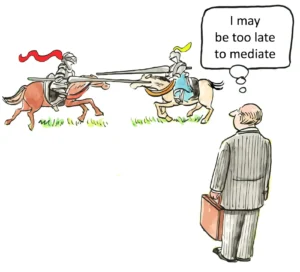A Detailed Guide to Help You Understand Contingency Fees
Hiring an attorney can be daunting, particularly when you start considering the bill. Most people worry they will not be able to pay for an attorney, which may discourage them from pursuing a valid claim.
Thankfully, contingency fees make it possible for accident victims and those strapped for money to access the support they need without paying up front. Understanding how these charges work can help you feel more confident as you pursue your case.
What are Contingency Fees?
A contingency fee is a payment agreement between a client and an attorney where the attorney receives remuneration only if the client wins the case. Instead of paying an hourly or flat rate, the client is making a guarantee to pay the attorney a percentage of the final settlement or award given by the court. When the case is lost, an attorney does not get paid for their time and effort.
This arrangement makes legal services more accessible to people who cannot afford to pay up front. It also aligns the lawyer’s and client’s interests as both are stakeholders in obtaining the highest recovery possible.
How Contingency Fees Work
The details of a contingency fee agreement can vary, but the basic process usually looks like this:
- Initial Agreement – The attorney and client sign an agreement stating that the attorney would get a proportion of whatever he wins for the client (25% to 40% depending on the complexity of the case).
- Case Expenses – Some lawyers pay costs for you, such as filing fees and expert witness fees, or for the investigation. These amounts are then subtracted from the settlement or award. Clients need to ask themselves if they will have to bear these expenses in the event of an unsuccessful case.
- Settlement or Verdict – This is when the money awarded to the client by the court is given separately to the attorney and the client, making it more likely that he gets his cut. In a no-win scenario, the client usually has no liability to the lawyer for attorney fees (but does owe out-of-pocket expenses according to the contract)..
- Transparency and Ethics – Lawyers must explain all conditions in a contract before accepting a case on a contingent fee basis. Clients should always read the contract thoroughly and ask questions about percentages, expenses, and duties.
This payment scheme enables people who do not have sufficient resources to keep on fighting for justice, even against large businesses or insurance companies.
Common Types of Cases Utilizing Contingency Fees
Contingency fee structures are common in cases where clients seek financial reimbursement for loss or injury. They include:
- Personal Injury Claims—Car accidents, motorbike accidents, slips and falls, and industrial accidents are usually handled on a contingency basis.
- Medical Malpractice—Victims of medical negligence can suffer enormous health and monetary consequences. Contingency fees allow them to file a claim without out-of-pocket costs.
- Wrongful Death Cases – Families of loved ones who were killed often employ contingency fee arrangements to pursue their claims.
- Product Liability—Harm from dangerous or defective products can also result in contingency-based cases.
Generally speaking, if there is a prospect of monetary recovery involved in a case, a contingency fee arrangement will be available.
Conclusion
Contingency fees make legal services accessible to those who otherwise would not hire an attorney due to financial reasons. By enabling attorneys to be paid strictly for performance, such contracts not only lower the client’s financial risk but also promote the lawyer‘s hard work in striving toward a positive resolution.
Here is what you need to know about contingency fees:
• Clients pay nothing upfront; lawyers are paid only in the event of a winning case.
• The lawyer’s fee is a percentage of the verdict or settlement, typically 25 to 40 percent.
• Contingent fees are common in personal injury, wrongful death, medical malpractice, and product liability matters.













